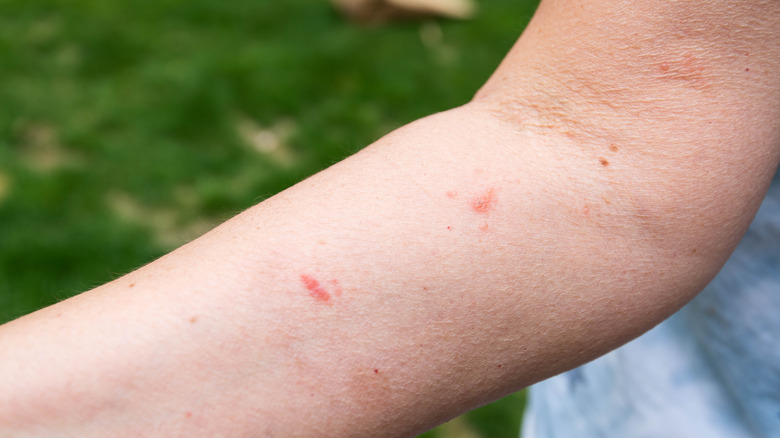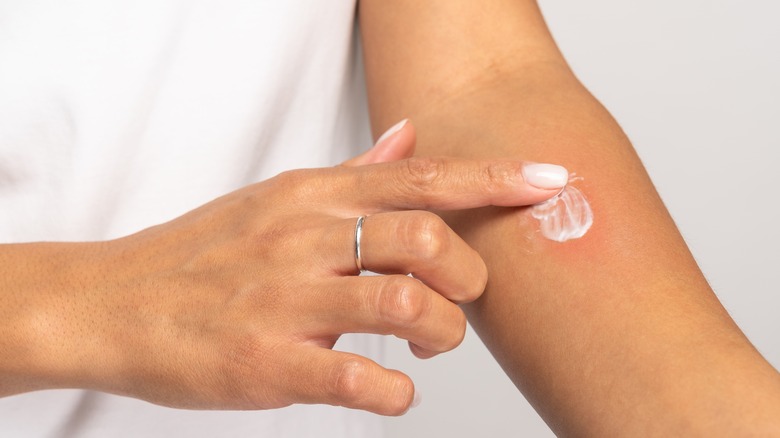How To Identify And Treat Poison Sumac
You've likely heard of the allergenic plant poison ivy, but you may not have heard of its rash-inducing friends poison oak and poison sumac. Wet areas (like swamps) are home to poison sumac. It's less common than poison ivy, but can also cause an allergic skin reaction (per Medical News Today). Poison sumacs contain allergens that can result in lung irritation when the plant is burned, as reported by the Centers for Disease Control and Prevention (CDC). When part of the plant is damaged, the poison sumac releases urushiol oil. Direct contact with the plant — or even simply touching objects with urushiol oil on them — can expose people to the toxic chemical.
After being exposed to poison sumac, people may experience itchy bumps and blisters. These generally appear within 24 to 72 hours, as shared by Johns Hopkins Medicine. Symptoms of a serious allergic reaction to the plant include difficulty breathing, trouble swallowing, or swelling, which are signs that you should seek immediate medical attention.
To make matters more confusing, there are similar sumac plants that do not cause an allergic reaction, such as the winged sumac and the staghorn sumac (per Healthline). However, before you consider avoiding any plant that looks anything like poison sumac, let's find out how you can identify one when you see it. Furthermore, in the event that you do come in contact with a poison sumac plant and fall victim to its oil, what can you do to treat your allergic reaction?
Ways to recognize and treat poison sumac
Despite poison sumac containing the same toxic chemical as poison ivy and poison oak, the three plants are noticeably different in their appearance. According to the Children's Hospital of Philadelphia, the key to recognizing poison sumac is by paying attention to its leaves and branches. Poison sumac will have approximately seven to 13 leaflets on each stem, all with a smooth surface and a pointed tip. Poison sumac trees can grow to 20 feet high, with their leaflets varying in appearance throughout the seasons (per the University of Florida). The leaflets can be a bright orange color in spring or a reddish-orange color in autumn. In addition, you may notice that the stems of poison sumac have a distinct reddish color.
The best way to prevent an allergic reaction to poison sumac is to know what it looks like so you can avoid it. However, some people may still come in contact with the poisonous plant and its toxic oil, causing them to have a reaction. A minor allergic reaction can usually be treated at home. However, if the rash covers the majority of your body, you have a fever, or you experience uncontrollable itching, you should see a doctor (per Johns Hopkins Medicine). You may be prescribed an over-the-counter medicine such as calamine lotion. A bath with baking soda or colloidal oatmeal might be suggested. If your itching is uncontrollable, your doctor may prescribe oral antihistamines (via the Children's Hospital of Philadelphia).


